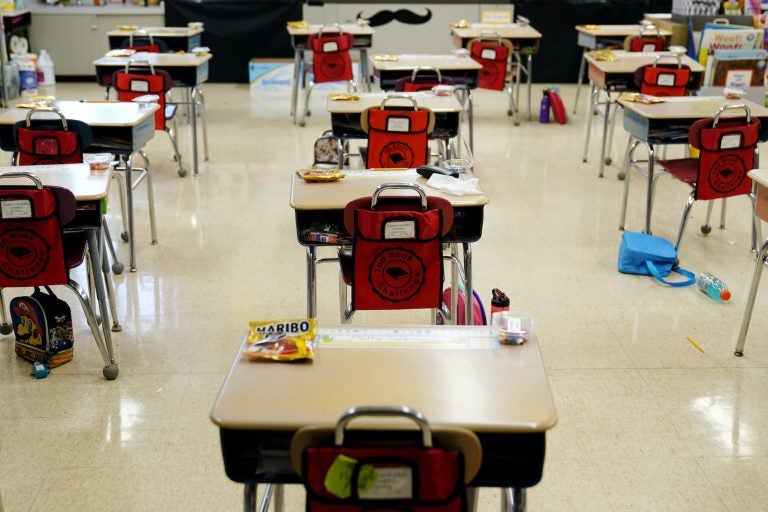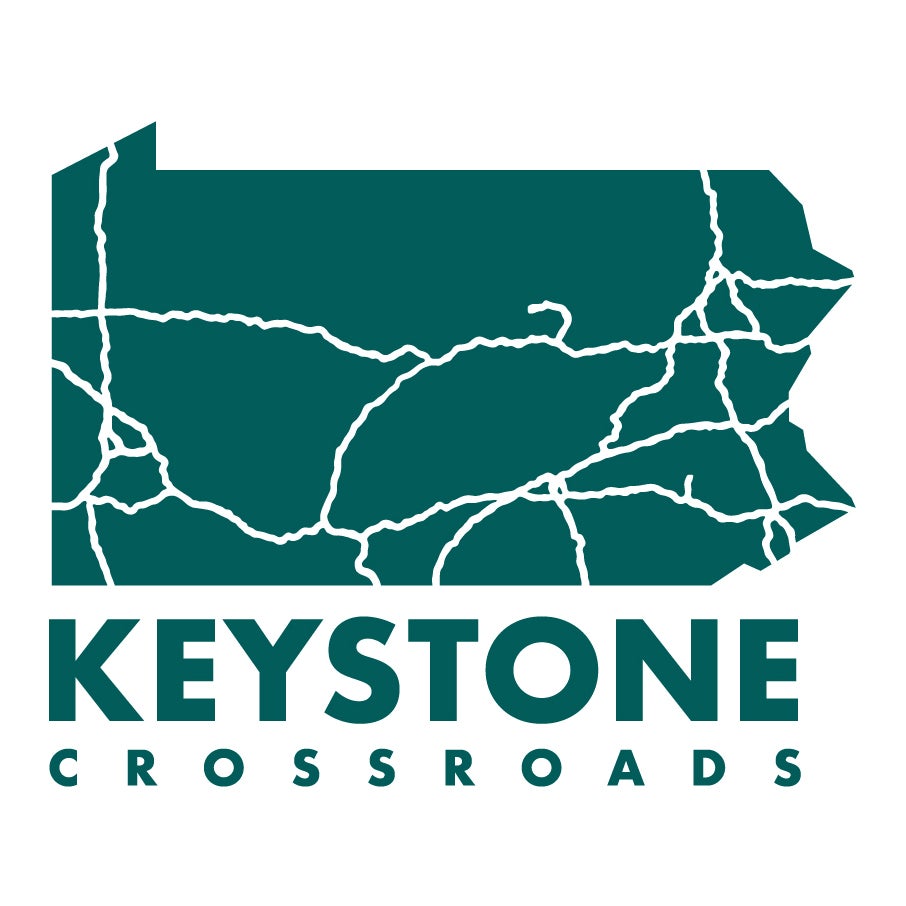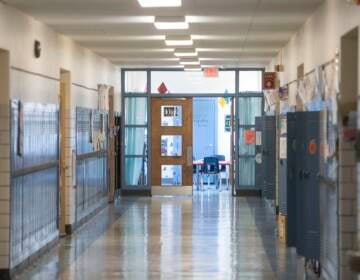Pa. education leaders call on schools to boost teacher diversity with stimulus funds
Educators, administrators, and advocates across Pa. said districts need to use some of the $4.5 billion in stimulus funding for schools to recruit and retain teachers of color

Desks are arranged in a classroom at Panther Valley Elementary School, Thursday, March 11, 2021, in Nesquehoning, Pa. (AP Photo/Matt Slocum)
Education advocates from across the commonwealth are calling on all Pennsylvania school districts to prioritize increasing racial diversity among the state’s teachers.
Pennsylvania is expecting $4.5 billion in emergency funding for schools from the federal stimulus plan. The ESSA Leadership Learning Community, made up of educators, administrators, and advocates across the state, said districts need to use more of those funds to recruit and retain educators of color.
Esther Bush, president of the Urban League of Greater Pittsburgh, said current district budgets don’t reflect the needs of students.
According to the Center for Reinventing Public Education, as of July 2021, only 8% of 100 large and urban school districts in the nation are using stimulus funds to address increasing teacher diversity.
“Projected expenditures to address workforce diversity concerns neither reflect the magnitude, nor the urgency, necessary to amend the needs of the commonwealth’s most vulnerable population: our children,” said Bush.
Bush said she challenges every individual and organization “to renew and double their efforts to make a more diverse education pipeline a reality.”
The call comes amid a widening gap between the proportion of students and teachers of color in Pennsylvania. The state is among the worst in the nation for teacher-to-student ratios.
According to an analysis of Pennsylvania student and teacher demographics by Keystone Crossroads and Research for Action, more than one-fifth of the state’s 500 school districts haven’t had a single teacher of color in at least seven years.
Across the state, educators, students, and activists have raised concerns over lack of teacher diversity. In Philadelphia, last summer the Melanated Educators Collective and the Racial Justice Organizing Committee issued a list of 10 demands for the district that called for equitable hiring practices of Black teachers.
On Tuesday, education advocates emphasized the life-altering impacts of having teachers of color in schools.
According to the National Bureau of Economic Research, Black students who have at least one Black teacher in elementary school are more likely to graduate from high school and more likely to enroll in college.
Sharif El-Mekki, CEO of the Center for Black Educator Development, added that all students benefit from teacher diversity.
With more teachers of color, said El-Mekki, “[students] are better prepared to participate as informed and engaged citizens in an inclusive, national, civic culture in an increasingly complex world.”
Other education leaders spoke about a myriad of ways their schools are currently supporting teachers of color, and how they hope districts utilize American Rescue Plan funds.
Tanya Garcia, Deputy Secretary of Higher Education for the Pennsylvania Department of Education, said American Relief Plan funds can be used by schools to recruit and hire educators of color, set up mentoring programs for students of color to become teachers, improve employee benefits so schools can increase their educator retention rates, and develop mentoring programs between seasoned and newer educators.
“It’s critically important that our educators have opportunities to strengthen and expand their awareness of how to approach students of varying backgrounds and different lived experiences,” said Garcia, “and ensure that they are offering all students the emotional safety to engage in a healthy learning environment.”
Aaron Walton, President of Cheyney University, a historically Black university, suggested school communities put more funds towards partnership programs between institutions of higher education and school districts.
Cheyney just launched its “Aspire to Educate” program last summer, a five-week summer program for high school students to learn about a career in education.
Twenty-one students participated in the program in 2020, according to Walton, and 19 of them chose to matriculate and continue their education at Cheyney.
Programs like this require “additional resources and funding to enable institutions like Cheyney University to host and sustain them,” said Walton. “The American Relief Plan dollars gives us another opportunity to collaborate and invest in teacher diversity.”
The School District of Philadelphia is also making plans to further address teacher diversity, according to Larisa Shambaugh, Chief Talent Officer for the School District of Philadelphia.
“We know that there is much more that we must do to have our educator demographics better reflect our student demographics,” said Shambaugh.
She said the district plans to use ARP funds to reinvest in its leader residency program. The district is also planning to work with the teachers’ union to develop initiatives to help paraprofessionals in the district become teachers.
The goal, said Shambaugh, “is to provide those who already work with our students and who are already committed to our community with a clear pathway to becoming a teacher.”
The district also plans to develop its teacher retention efforts, including “more supports for new teachers, and providing more time for teachers to work collaboratively together,” said Shambaugh.
For Valerie Kinloch, Dean of University of Pittsburgh’s School of Education, recruitment, and training efforts for people of color all come back to retention plans.
“That retention piece is, we value people so much that, before they can even consider leaving, we have provided supports for them to be successful, to both survive and thrive within this environment,” said Kinloch.
El-Mekki agreed. “There are prerequisites for teacher-of-color recruitment … a strong retention plan. If retention isn’t a focus, talent will come through the front door and leave out the back door.”

Get more Pennsylvania stories that matter
WHYY is your source for fact-based, in-depth journalism and information. As a nonprofit organization, we rely on financial support from readers like you. Please give today.









